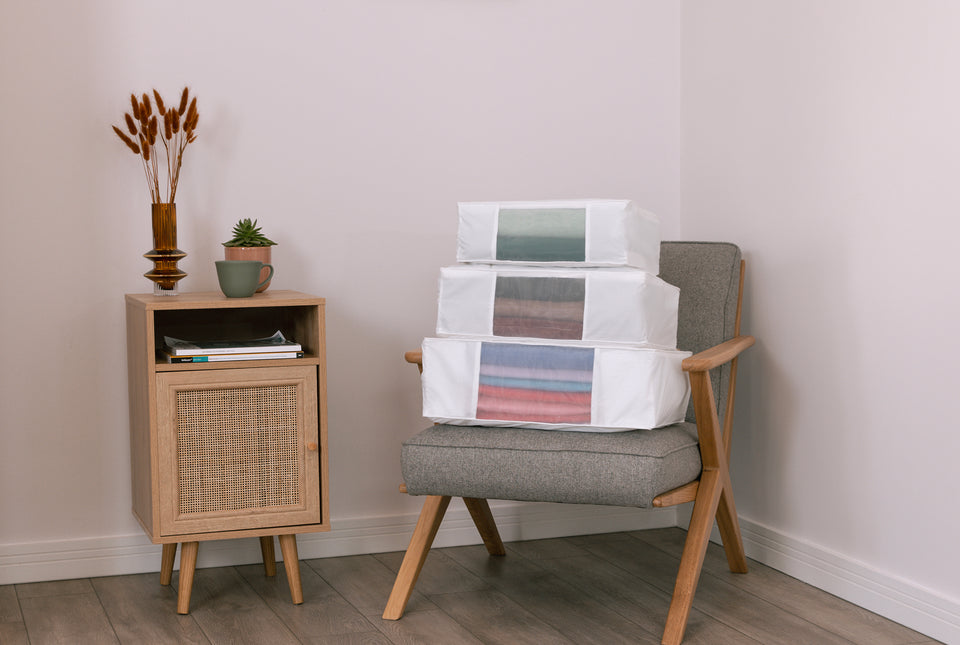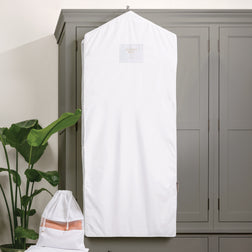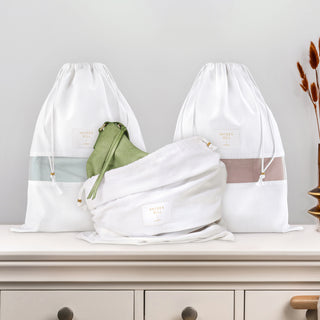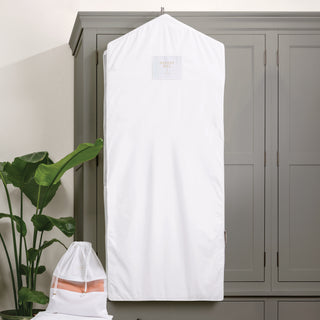Knowing how to store delicate clothing properly is paramount. Whether it's a treasured vintage dress, a collection of luxurious silk blouses, a graduation gown you want to save, or an heirloom passed down through the generations, only delicate clothing that is properly cared for will stand the test of time. This post will cover what delicate clothing is and the step-by-step process for storing them.
What clothes are considered delicate?
Delicate clothing is made of fabrics such as silk, wool, linen, chiffon, and lace. These fabrics are more susceptible to damage from regular wear and tear and poor garment storage.
How to Store Delicate Clothing
Understanding how to preserve delicate clothing is important for maintaining the beauty and lifespan of any item made of delicate fabric, whether it be a luxury silk gown, a delicate lace top, or a high-quality cashmere sweater.
Clean Before Storing

When preserving delicate materials, it is critical to make sure they are completely clean before storing them. Delicate textiles are prone to discolouration, deterioration, or odours and can be vulnerable to damage if stored without cleaning.
First, examine delicate clothing carefully for any stains, oils, or sweat markings that may have developed during wear. Even seemingly little stains could eventually cause irreparable harm since they can embed themselves in the fabric and become harder to get out as time passes.
Take valuable delicate clothes to a dry cleaner that is skilled in managing delicate textiles. Their skill guarantees that items are cleaned effectively without endangering the fabric or its delicate decorations. Another option is to hand wash delicate clothes.
Choose the Right Hangers
The hanger you choose can greatly impact delicate clothing’s integrity and shape. Hangers with padding or fabric covers are a great choice for delicate clothing. The possibility of wrinkles and marks is reduced since these hangers offer a soft and supportive surface for the material to rest on.
Use Garment Bags
A garment bag is essential when protecting delicate materials while in storage. The fabrics can breathe with the help of these protective coverings, which add an extra layer of protection against dirt, light, humidity, and harmful insects.
Choose a garment bag made of natural, breathable materials like Hayden Hill organic cotton hanging bags. Our bags protect delicate clothes from the elements without suffocating them, achieving the ideal balance between protection and breathability.

Separate with Tissue Paper
Consider placing acid-free tissue paper inside the garment bag for further protection, especially for heritage or high-value items. To avoid colour transfer, friction, and unwanted creasing, delicately lay the tissue paper between the fabric’s folds. Acid-free tissue paper absorbs extra moisture, lowering the possibility of mildew growth.
Avoid Overcrowding
Delicate clothing also requires adequate space to maintain its shape, texture, and appearance. The integrity of delicate materials could be gradually compromised by overcrowding in a storage space with too many items.
Ideally, delicate items should be allowed 2 to 3 inches each for jackets and suits and 1 inch each for blouses, trousers, and skirts.
Fold with Care
Hanging delicate materials is often the best storage option, but sometimes folding is better, especially for extremely detailed pieces or sweaters.
The meticulousness of your approach is the secret to effective folding. First, choose a smooth, clean surface to work. Cover it with a soft cloth to guard against any potential damage. Lay the delicate material on top, taking care to smooth out any folds or creases that may already be there.
Aim to fold the clothing along its natural seams and lines. By folding in this way, you reduce the strain on the cloth and lower the chance of wrinkles. When folding a delicate blouse, for instance, begin by folding the sleeves inside and toward the centre of the garment. Then, depending on size, carefully fold the garment in half or thirds, being careful to line up seams and edges.
Then place the garment in a sweater storage bag with see-through panels that allow you to see your pieces easily while providing ultimate protection against the elements.

Keep Moths Away
Use Hayden Hill moth traps or hang sachets with dried lavender buds in your wardrobe to keep your clothes smelling fresh and deter moths. Cedar chests are also a good option since they contain natural oils that destroy moth larvae, but be sure cedar is never in direct contact with clothes.
Storing delicate clothing properly is essential for preserving its beauty, longevity, and value. By following these guidelines, you can confidently store your delicate clothing, preserving the memories and elegance they represent. Rest assured that your cherished garments will remain in pristine condition for years to come.








